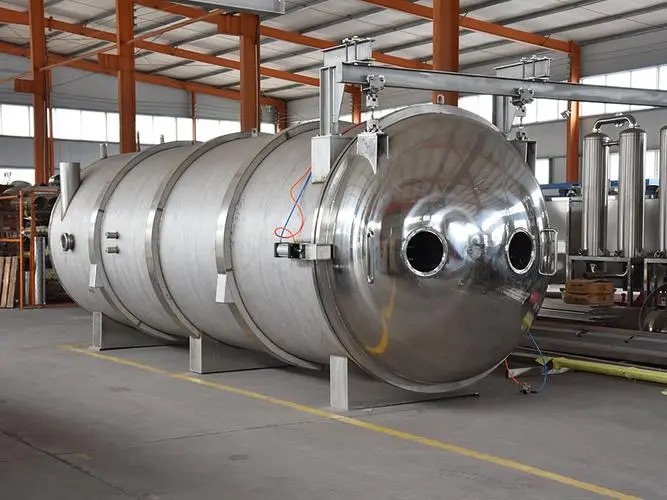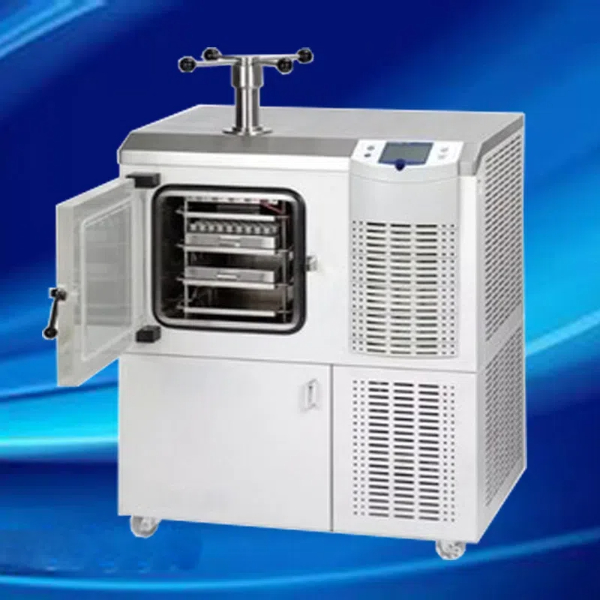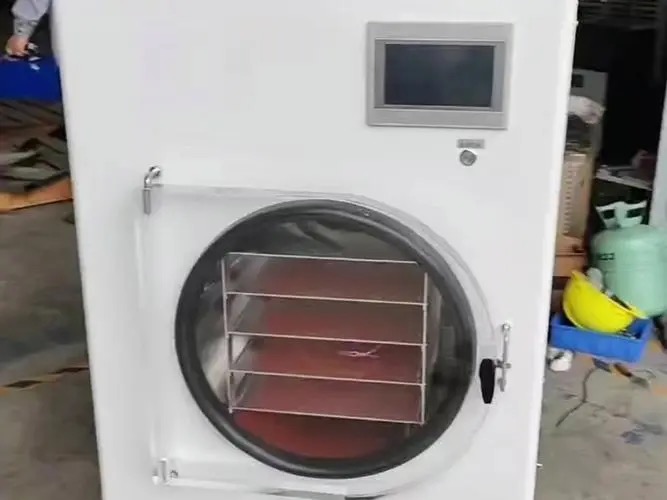
Content Menu
● Introduction
● Understanding Freeze Drying Technology
>> How Freeze Dried Foods Machines Work
● Benefits of Using Freeze Dried Foods Machines
>> 1. Extended Shelf Life
>> 2. Nutritional Preservation
>> 3. Flavor and Texture Retention
>> 4. Lightweight and Compact
>> 5. Versatility
● Choosing the Right Freeze Dried Foods Machine
>> 1. Capacity
>> 2. Energy Efficiency
>> 3. Ease of Use
>> 4. Noise Level
>> 5. Maintenance Requirements
● Popular Freeze Dried Foods Machine Brands
● Tips for Using Your Freeze Dried Foods Machine
● The Future of Freeze Dried Foods Machines
● Conclusion
● Frequently Asked Questions
>> 1. Q: How long does the freeze-drying process typically take?
>> 2. Q: Can all types of food be freeze-dried?
>> 3. Q: How do I rehydrate freeze-dried foods?
>> 4. Q: Are freeze-dried foods as nutritious as fresh foods?
>> 5. Q: How much electricity does a home freeze dried foods machine use?
Introduction
In recent years, freeze dried foods machines have gained significant popularity among food enthusiasts, preppers, and health-conscious individuals. These innovative devices offer a unique way to preserve food while maintaining its nutritional value, flavor, and texture. This comprehensive guide will explore the world of freeze dried foods machines, their benefits, and how they're changing the way we think about food preservation.
Understanding Freeze Drying Technology
Freeze drying, also known as lyophilization, is a sophisticated dehydration process that removes water from frozen food through sublimation. This process involves three main stages:
1. Freezing: The food is rapidly frozen to preserve its structure.
2. Primary drying: The frozen water is removed through sublimation under vacuum conditions.
3. Secondary drying: Any remaining bound water is removed through desorption.
How Freeze Dried Foods Machines Work
A typical freeze dried foods machine consists of several key components:
- A vacuum chamber with temperature-controlled shelves
- A powerful vacuum pump
- A refrigeration system
- A condenser to collect water vapor
- A control system for monitoring and adjusting the process
These components work together to create the perfect environment for freeze drying various foods.

Benefits of Using Freeze Dried Foods Machines
1. Extended Shelf Life
One of the primary advantages of using freeze dried foods machines is the significantly extended shelf life of preserved foods. Properly freeze-dried and packaged foods can last for 25-30 years, making them ideal for long-term storage and emergency preparedness.
2. Nutritional Preservation
Unlike other preservation methods, freeze drying retains most of the food's original nutritional value. Vitamins, minerals, and enzymes remain largely intact, ensuring that you're consuming healthy, nutrient-rich foods even after long-term storage.
3. Flavor and Texture Retention
Freeze dried foods maintain their original flavor profile and, when rehydrated, closely resemble their fresh counterparts in texture. This makes them popular among outdoor enthusiasts and for use in gourmet cooking.
4. Lightweight and Compact
By removing water content, freeze dried foods become incredibly lightweight and compact. This characteristic makes them perfect for backpacking, camping, and space travel.
5. Versatility
Freeze dried foods machines can process a wide variety of foods, including fruits, vegetables, meats, dairy products, and even complete meals. This versatility allows users to create a diverse food storage plan.
Choosing the Right Freeze Dried Foods Machine
When selecting a freeze dried foods machine for home use, consider the following factors:
1. Capacity
Determine how much food you plan to freeze dry regularly. Machines come in various sizes, from small countertop models to large-capacity units suitable for serious food preservation enthusiasts.
2. Energy Efficiency
Look for models with energy-efficient features, as freeze drying can be an energy-intensive process. Some newer models incorporate technologies to reduce power consumption.
3. Ease of Use
Choose a machine with user-friendly controls and clear instructions. Many modern freeze dried foods machines come with digital interfaces and pre-programmed settings for different food types.
4. Noise Level
Consider the noise output of the machine, especially if you plan to run it in living areas. Some models are designed to operate more quietly than others.
5. Maintenance Requirements
Check the maintenance needs of the machine, including cleaning procedures and any parts that may need regular replacement, such as vacuum pump oil.

Popular Freeze Dried Foods Machine Brands
Several manufacturers produce high-quality freeze dried foods machines for home use. Some popular brands include:
1. Harvest Right
2. Labconco
3. Cuddon Freeze Dry
4. Millrock Technology
5. GEA Group
These brands offer a range of models to suit different needs and budgets.
Tips for Using Your Freeze Dried Foods Machine
To get the most out of your freeze dried foods machine, follow these tips:
1. Prepare foods properly by cutting them into uniform pieces for even drying.
2. Avoid overloading trays to ensure proper air circulation.3. Use pre-freezing for high-moisture content foods to reduce overall drying time.
4. Experiment with different foods to find what works best for your needs.
5. Store freeze-dried foods in airtight containers or mylar bags with oxygen absorbers.
The Future of Freeze Dried Foods Machines
As technology advances, we can expect to see further improvements in freeze dried foods machines, including:
1. More energy-efficient models
2. Faster processing times
3. Enhanced automation and smart features
4. Increased capacity for home units
5. Integration with other food preservation technologies
Conclusion
Freeze dried foods machines represent a significant advancement in food preservation technology. By offering extended shelf life, nutritional retention, and versatility, these devices are changing how we approach long-term food storage and emergency preparedness. Whether you're an outdoor enthusiast, a health-conscious individual, or simply someone interested in exploring new culinary possibilities, a freeze dried foods machine could be a valuable addition to your kitchen arsenal.

Frequently Asked Questions
1. Q: How long does the freeze-drying process typically take?
A: The freeze-drying process can take anywhere from 20 to 40 hours, depending on the food type and quantity being processed.
2. Q: Can all types of food be freeze-dried?
A: While most foods can be freeze-dried, those with high fat content may not be suitable as fats don't freeze-dry well and can become rancid over time.
3. Q: How do I rehydrate freeze-dried foods?
A: Simply add water to the freeze-dried food. The amount of water and time needed will vary depending on the food type, but most items rehydrate quickly.
4. Q: Are freeze-dried foods as nutritious as fresh foods?
A: Freeze-dried foods retain most of their original nutritional value, often preserving 97% of the nutrients found in fresh foods.
5. Q: How much electricity does a home freeze dried foods machine use?
A: Energy consumption varies by model, but on average, a home freeze dryer might use about 1-3 kWh of electricity per hour of operation.












